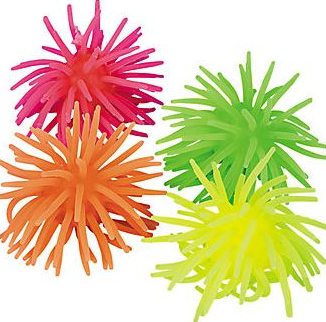 Johnny walked through the classroom door late. I took one look and thought, “Whoa! He didn’t take his meds today!” Before he made it to his seat in the front of the classroom, he had touched four other students, grabbed one girl’s pen right out of her hand, kicked a backpack out of his way, shouted across the room at a friend, and dropped his books on his desk with a bang. What was the rest of the period going to be like? Well, it was time to take out my bag of tricks and techniques. I handed Johnny a mandala and a bag of markers and said, “Johnny, I’m working on a new bulletin board and want to add some calming color. Would you please color one of these for me? Just work on it till we get started.” Johnny happily obliged. I watched as he become physically calm. He was fine the rest of the period.
Johnny walked through the classroom door late. I took one look and thought, “Whoa! He didn’t take his meds today!” Before he made it to his seat in the front of the classroom, he had touched four other students, grabbed one girl’s pen right out of her hand, kicked a backpack out of his way, shouted across the room at a friend, and dropped his books on his desk with a bang. What was the rest of the period going to be like? Well, it was time to take out my bag of tricks and techniques. I handed Johnny a mandala and a bag of markers and said, “Johnny, I’m working on a new bulletin board and want to add some calming color. Would you please color one of these for me? Just work on it till we get started.” Johnny happily obliged. I watched as he become physically calm. He was fine the rest of the period.
When faced with students having difficulty focusing, what can educators do? Here’s a list of 12 surefire ways to focus your class and increase learning.
1. Make use of non-verbal signals to cue student before transitions, or to stop all activity and focus on the teacher.
2. Assign students ‘Task Buddies’ to help keep each other on task. Allow students to ask buddies for clarification on seatwork.
3. Seat distractible students surrounded by well-focused students.
4. Use physical proximity to help cue student to return to task.
 5. Allow quiet, doodling, or mandalas to help students focus.
5. Allow quiet, doodling, or mandalas to help students focus.
6. Vary tone of voice when presenting information. (If you can pull off a dramatic flair, it works well.)
7. Provide or partitions to reduce visual distractions during seatwork or test-taking as appropriate. (This should be a student choice not a punishment.)
8. Provide sound reducing headsets for students to minimize auditory distractions.
9. Color or highlight directions and important words on assignments.
10. During silent reading, consider allowing students to sit on the floor if they ask. Some students become amazingly focused when they carve out their own space on the floor or in a corner of the classroom.
11. Significantly increase opportunities for active student involvement in the lesson and utilize questioning techniques that engage all students.
12. Consider allowing ADHD students to “tutor” other students in areas of strength. This often brings out focused, caring behavior and encourages self-esteem.


